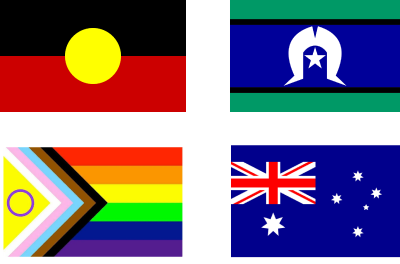
In many western societies, eye contact is encouraged as a sign of attentiveness and respect. However, for many in the Autistic community, it may feel anything but natural or comfortable, and is often marked by discomfort or overstimulation rather than ease.
For Autistic individuals, eye contact is often not instinctive. In social interactions, it can contribute to our sensory overwhelm, adding to what is already a heightened sensory landscape. One reason for this is the increased cortical excitability of the Autistic brain, which leads to a heightened cognitive load when processing sensory input. This means that seemingly simple acts — like maintaining eye contact — can become intense and overstimulating.
For us, looking someone directly in the eyes may feel uncomfortable, even threatening, rather than supportive or engaging.
Some Autistic individuals, experience environments as inherently unsafe due to our sensory sensitivities. When talking to someone while feeling unsafe, our instinct can be to subconsciously keep an eye on our peripheral surroundings, rather than focusing directly on the other person. It allows us to listen while remaining vigilant of our surroundings in a way that feels safer.
Interestingly, many Autistic people find that eye contact is much easier to maintain in familiar, safe spaces, such as at home or with loved ones.
In these environments, where overstimulation is less likely and the need for social masking is lower due to feelings of acceptance, making eye contact feels safer. But outside these familiar spaces, eye contact can once again become challenging and physically draining.
Other Autistic individuals have reported being accused of making “too much” eye contact. In social situations – faced with the pressures of neuronormative expectations – it can be easier to lock eye contact and ‘set and forget’ in order to free up some cognitive bandwidth to listen to what is being said. This strategy helps conserve cognitive energy for other aspects of conversation, like information processing and formulating responses.
Both avoiding eye contact and maintaining intense eye contact are valid ways for Autistic individuals to navigate social interactions that feel cognitively demanding.
Interestingly, recent research shows it is only non-autistic individuals – and not Autistic individuals – who experience distress when engaging with someone who is averting their gaze. This supports the idea that eye contact differences in Autistic individuals is simply a relational difference, instead of a “deficit”.
Just as Autistic people experience eye contact differently, there are cultural variations in the interpretation of eye contact. For example:
These cultural perspectives highlight that eye contact is not a universal social cue, but rather a culturally shaped form of non-verbal communication.
Many Autistic individuals adopt techniques to cope with the discomfort of eye contact in social situations:
Instead of expecting Autistic people to adhere to socionormative eye contact norms, we can normalise alternative forms of engagement, such as:
For many Autistic individuals, eye contact isn’t simply a matter of showing an interest and respect — it is about sensory processing, emotional regulation, language processing, and personal safety. Recognising and respecting these differences can foster better understanding and inclusivity.
And by making simple accommodations, we acknowledge that eye contact is neither universal nor necessary for meaningful communication, and we build empathy and respect across all cultures and neurotypes.

The Reframing Autism team would like to acknowledge the Traditional Owners of the lands on which we have the privilege to learn, work, and grow. Whilst we gather on many different parts of this Country, the RA team walk on the land of the Awabakal, Birpai, Whadjak, and Wiradjuri peoples.
We are committed to honouring the rich culture of the Aboriginal and Torres Strait Islander peoples of this Country, and the diversity and learning opportunities with which they provide us. We extend our gratitude and respect to all Aboriginal and Torres Strait Islander peoples, and to all Elders past and present, for their wisdom, their resilience, and for helping this Country to heal.